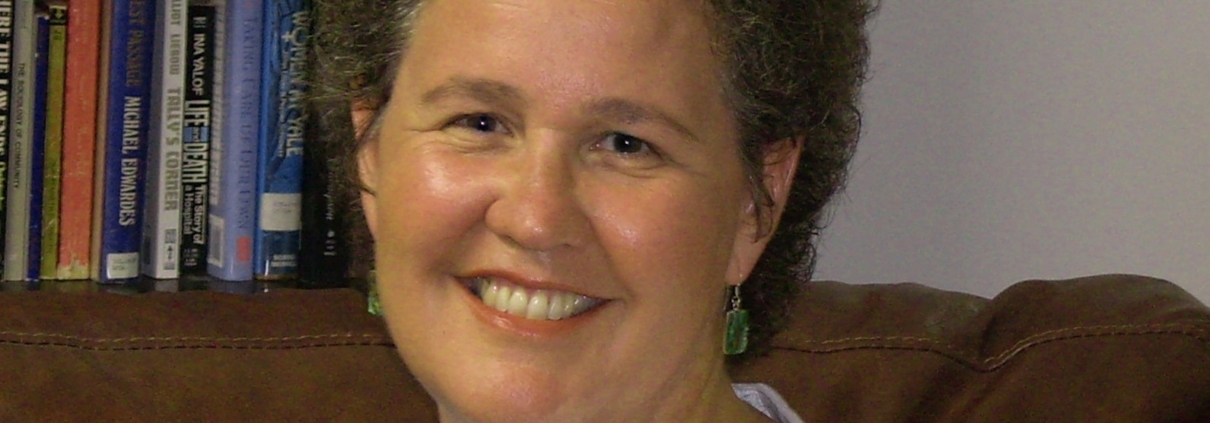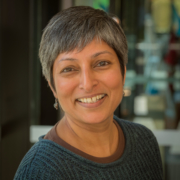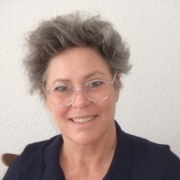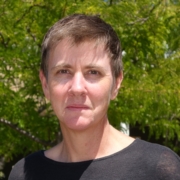To kick off the new year, we have a special show for you. Today, Linda Darling-Hammond joins me to talk about her new co-authored book Empowered Educators: How high-performing systems shape teaching quality around the world.
The book explores how several countries and jurisdictions have developed comprehensive teaching and learning systems that produce a range of positive outcomes, from student achievement to equity and from a professionalized teaching workforce to the integration of research and practice.
Linda Darling-Hammond is the president of the Learning Policy Institute and a Professor of Education Emeritus at Stanford University.
Citation: Darling-Hammond, Linda, interview with Will Brehm, FreshEd, 102, podcast audio, February 5, 2018. https://www.freshedpodcast.com/lindadarlinghammond/
Transcript, Translation, Resources:
Will Brehm 2:00
Linda Darling-Hammond, welcome to FreshEd.
Linda Darling Hammond 2:02
Thanks so much for having me.
Will Brehm 2:03
So, many listeners probably know the work that you do on the US education systems. You have worked on the Obama transition team in 2008 on education policy, you were supposedly in the running to be the US Secretary of Education, and many US states have actually worked with you on reforming their education systems over the years. So instead of focusing on the US education system today, I thought it would actually be pretty valuable for listeners to hear from you about the work you do outside of the US on exploring systems of education worldwide. So with that said, you’ve recently put together a co-written book that looks at teaching in Singapore, Finland, Australia, Canada, and China. Why did you select these countries and jurisdictions to explore?
Linda Darling-Hammond 2:58
Well, it was a combination of things. One is that, of course, there is a lot of interest in these countries because they tend to show up at the high end of the distribution on things like PISA tests. But even more importantly than that, is that these were places that have really thought hard about how to create a system of high quality teaching. They have worked on it for a number of years, they’ve really developed a coherent approach to the support of teaching. And we wanted to see what that looks like and look at the outcomes that are associated with that kind of coherent, systemic approach.
Will Brehm 3:41
So what does that look like? Can you take me inside some of these systems and tell me what does it look like to have a systemic approach to teaching and learning?
Linda Darling-Hammond 3:50
Well, it is both thinking about the teaching career in an integrated way, and attending to how we recruit people into the profession who have the kinds of knowledge, skills and attributes that you want in teachers. Also recruiting people into leadership roles later in their careers; how you prepare them, how that engages them in the work, in the schools – as well as in the universities – so that they’re experiencing the kind of curriculum and instructional strategies that are also part of that state, province or country. The induction process of the beginning of the career, the ongoing professional learning, but also the compensation that is part of the choice of the occupation, and the school funding that enables or disables the implementation of the kinds of practices that are needed and desired in that society. These are places that really think about that in a holistic way. We did find that in some countries, there was more attention to some features than others. For example, Finland is well known for a very, very highly developed pre-service teacher preparation system. Whereas you would see very strong attention to teacher induction in Shanghai, but they are accomplishing similar things in sometimes slightly different ways. And every one of these jurisdictions was filling in the parts of the system where they felt that they had done less work previously. So they had a conception of how to keep moving all the parts forward.
Will Brehm 5:42
And this is mainly at the policymaker level, where policymakers are trying to fill in these gaps, as you say?
Linda Darling-Hammond 5:51
Well, we in our study, we talked to a lot of policy makers. In the small countries, much of the activity is national. In the large countries, most of the activity is at the state or province level – in China, in Australia, in Canada. But we also worked with, and talked to, people in schools of education, in schools themselves, in organizations that support professional learning. So we were engaged with many people in the profession, as well as folks who think about how to fund and enable and support the work of the profession through policy.
Will Brehm 6:36
And in these different jurisdictions in which you explored, how involved are teachers themselves in this process of enabling comprehensive teaching and learning systems?
Linda Darling-Hammond 6:48
In most of the places we visited, and I think I can probably say in all of them, there is substantial involvement of teachers throughout that whole system. Teachers are involved, for example, in developing the curriculum standards that the national curriculum, or the state or provincial curriculum that guides what teachers do in the classroom. There are usually Ministries of Education or Departments of Education that are full of people who were in the profession and have eventually ended up in the department. In some places, there is a very strong pipeline to develop people through the system to come into the ministry. For example, in Singapore, or in Ontario, Canada, seconding people from the world of practice into the Department of Education so that there are current practitioners available as well. But then as policies are being debated and formed and so on, there’s a lot of engagement of members of the profession in informing the nature of the policies, thinking through and helping to revise and revamp the implementation over time. Much more connected activity between the members of the profession, and the members of government in most of these jurisdictions. I would say there was one partial exception for a period of time in Victoria, Australia, where a government took over for a short period of time that was much less connected to the profession. But it lasted a short time and then when that government changed, the work resumed to really ensure that the policies were supportive and informed by the members of the profession.
Will Brehm 8:52
Why are policymakers at these different levels of government encouraging of teachers, members of the profession, to join in this policy dialogue? Is there public opinion in these jurisdictions that is supportive of teachers that then policymakers are reacting to? What is the underlying reason that policymakers are so engaged with members of this profession when they make policy?
Linda Darling-Hammond 9:19
I think there is a strong valuing of the profession of teaching. And you can really see it in places like Singapore, which thinks of teachers as nation builders, and there’s a lot of energy put into: How do we recruit the best people? How do we support them? The government will raise teacher salaries unilaterally whenever they feel they may be falling behind those of other college graduates so that there is always the capacity to recruit the best people into the profession. In Finland, teaching is the number one profession chosen by young people, particularly primary school teaching, because it is highly respected and highly valued. It is a lot of investment in the preparation of teachers. In recent years in Canada, again a resurgence of real respect for, and investment in, teaching after an era where that was somewhat less the case more than a decade ago. But in places that have really tried to both invest in education, and see that as important, and equalize educational opportunity for all of the groups of students in their societies, the absolute need to invest in teaching in ways that actually improve the quality of teaching – which also means, of course, listening to what teachers need to do their work well – has really risen to the surface. You see the same thing in China; there is a massive set of investments going on across China in the quality of teaching and in the quality of teachers. Shanghai is at the front end of that process, and I think these are countries that feel that you can’t get where you’re going as a 21st century nation in a knowledge based economy with all of the technology that is driving innovation and change if you don’t have really high quality schools that are staffed by really high quality teachers and leaders.
Will Brehm 11:29
So in in a place like Shanghai, what is the government investing in to produce that quality? In education research, we often hear “quality”, but it is usually a rather vague term. When policymakers actually fund things, what are they actually putting the money into?
Linda Darling-Hammond 11:49
Well, there is a lot of things. For one thing, the teachers in these jurisdictions are paid equivalently to other college graduates. Just as a point of contrast, in the United States, teachers are paid about 30% less than other college graduates. And in a number of these jurisdictions, the government actually is part of leveraging those investments. But beyond that, in all of these jurisdictions, the bulk of the cost – and in some cases, the entire cost of teacher education – is paid for by the government so that you can recruit good people in and not put them into debt while they’re preparing to teach. They invest in high quality preparation so that the caliber of what teachers experience is high quality. In Finland and Singapore, teachers earn a stipend or a salary while they are training. I believe that is also true in Shanghai. In all of these jurisdictions, there is a lot of investment in induction for beginning teachers. There are trained mentors available in places like Singapore and Shanghai; they are part of a career ladder of teachers in schools. They are senior or mentor teachers who are identified based on their own accomplished teaching. They do earn greater compensation when they are so identified. And then they are given release time to spend inducting new teachers in, and supporting other teachers in the school around, action research and other forms of professional learning that are going on. So the investments are of many kinds. In virtually all of these countries there’s a major investment in professional development for teachers in a variety of ways, both through institutions like the Singapore Academy of Teachers, which is really run by teachers for teachers to support their professional development. In Ontario, the government funds action research projects and curriculum development projects that teachers propose. Many of those that are researched and scaled up across a school district or a province as they are demonstrated to be effective. So the investments come in many ways: good working conditions that enable teachers to do their work well, enough time for teachers to have collaboration with each other, and opportunities for ongoing professional development. All of those investments enable people both to become highly effective – that makes them feel better about the profession and want to stay longer, because when you are seeing the effects of the teaching on children, that’s what actually motivates teachers to want to stay in the profession – and they contribute to the retention rates that create a career long, continuous occupation, which in and of itself both improves the caliber of teaching and the odds of higher achievement, particularly for students who may have greater educational needs.
Will Brehm 15:17
What is the role of teacher unions in these different jurisdictions?
Linda Darling-Hammond 15:22
All of the jurisdictions have teacher unions, and they are strong parts of the system in most cases. I think virtually all of the teachers are members of unions in all of the jurisdictions. The roles of unions do vary from place to place. And one of the things that I find very interesting is that, in places – I mentioned Singapore, for example. Shanghai is similar, where the government raises salaries because they want to get high quality people into the profession, and the union doesn’t actually have to do much bargaining to get salaries, then the role of the teachers union is really around structuring professional learning opportunities, giving feedback and input on the various kinds of curriculum reforms or policies that are taking place rather than locked into adversarial collective bargaining. So it’s a different role, from place to place but I would say in all of the cases, a major part of the teacher union role is the role of representing the profession in terms of guiding professional learning, professional development and professional practices.
Will Brehm 16:44
So in these jurisdictions, what are the outcomes that the policymakers and the members of the profession are looking for? You mentioned achievement – higher achievement on various exams, for instance – and I know all of these jurisdictions score well on PISA, but are there other outcomes that are of interest to these jurisdictions for high quality teaching and learning systems?
Linda Darling-Hammond 17:11
Well, just with respect to student outcomes, there is also the relatively smaller gap between high and low performing students, and so more equitable outcomes. High outcomes with respect to student graduation rates, and continuation rates beyond secondary school are among the other, fewer students who are struggling in school – identified for things like special education or retained in grade – that’s relatively rare. So there are those kinds of outcomes. There are also the outcomes of more engaging and creative teaching; a lot of work in all of these countries on really transforming curriculum and assessment so that it better reflects and measures 21st century skills, problem solving, critical thinking kids applying their knowledge in much more complex ways, project based learning, ways by which kids are being taught to become self managing learners. All of those are byproducts of having a really well-educated and well supported teaching force because they require much more sophisticated practices in the classroom than putting everybody in a row and having them read the textbook and answer the questions at the back of the chapter and spit it back on a test at the end of the week. And so it’s an important byproduct of the investments in the profession, which is really investments in the capacity of the young people to be able to manage and lead in the very complex society and economy that we currently are experiencing.
Will Brehm 19:08
So in the work across these jurisdictions, what was the biggest surprise that you found?
Linda Darling-Hammond 19:15
There were a number of surprises. One was that in all of these jurisdictions, the role of research in teaching was very highly developed. Teachers are trained to become researchers, action researchers in the classroom. They are trained to learn to use research as the basis for decision-making, there are teams of teachers that engage in action research projects together. In Finland, to become a primary school teacher, you take an examination which requires you to read several pieces of educational research, and then to be able to interpret and comment on the meaning of that research, just for starters. And then when you finish your preparation program, you actually do a thesis, which is a research on practice. In Shanghai, most teachers have published at least one research article. They do action research in teams in every school. They will take a problem of practice and figure out how to inquire into it and then figure out what is working and write up the results. So most teachers have published, they have journals for teachers to share their research with each other, and traditional university based researchers often work with teachers in a number of cases. Some of the teachers in Shanghai have published as much as a tenured university professor; that is not uncommon in this country. But that work of the teacher as an inquirer, as a researcher, as a investigator, a problem solver, someone who was always taking up and solving problems of practice, is really getting embedded in teacher education and teacher development across all of these jurisdictions. And that was both surprising and inspiring to see. And of course, it propels the profession forward because what a profession relies on is not just what individual practitioners have figured out by trial and error. A profession is defined by developing knowledge and sharing that knowledge so that practice becomes more effective across the entire profession.
Will Brehm 21:40
And did you find or uncover any noticeable flaws in some of these systems?
Linda Darling-Hammond 21:46
Well, no system is ever perfect. And furthermore, no system can be lifted up whole cloth and adopted by anyone else, right? Everything is highly contextualized. So I would say that in virtually all of the systems we looked at, people are struggling with equity issues. Every society is becoming more diverse as people move around in the world. Immigration, refugees, native, or indigenous peoples whose education has been truncated, and in the past, really undermined in a variety of ways. We saw, in every case, recognition of inequalities, and many efforts to address those ranging from in Canada, preparation programs designed specifically to train teachers in new ways for teaching First Nations people, and creating various kinds of incentives to support First Nations individuals to access those programs and to become leaders in their communities, as well as to recruit other teachers to those communities. We saw similar work going on in parts of Australia. Finland is very equity oriented; many schools in Helsinki are now predominantly populated by immigrant students from everywhere, ranging from Somalia and Eastern Europe, to the Middle East, and Russia, and lots of really deep innovations to try to figure out how to create a multilingual, multicultural context for all of the kids and especially to enable new immigrants to become comfortable and part of the society. So I would say that’s one of the places where we saw a lot of self-criticism in the societies, “How are we going to address the needs that maybe have not been addressed in the past? Or how are we going to address the new needs that are becoming obvious in our society?”
Will Brehm 24:20
You earlier said that you can’t simply take how one education system works, and pluck it and put it into another education system, another context. The contexts are very different. So how did you manage to control, or how did you just manage the hugely different contexts of these different locations?
Linda Darling-Hammond 24:43
Well, one of the things you have to do if you are doing this kind of research, is really deeply understand the context and really look at that as part of the research itself, and not just try to understand ideas out of context. And then you need to be able to understand how aspects of the context – ranging from the way in which the country or the state or province is demographically comprised, geographically comprised, what the history and the culture have been, the mix of peoples, the governance structures, etc. You have to understand all that, and then understand how the practices evolve, have come out of that context. And if you’re trying to think about how a practice might be used in another context, you then have to look at it and sort of ask the question, “Which features of this might be transferable, given what you know about that other context, and which of them may be only applicable or primarily applicable in the context that they exist in. For example, I was just giving you the example of teacher preparation programs that we saw in Ontario that were really designed for teachers of First Nations people. So for example, the teacher preparation programs in Ontario, or Alberta, Canada, that were aimed at teachers for First Nations people were really rooted in the context of the history and culture of that province and the people that were the focus of the learning and the development of those teachers. That might be very hard to take up and replicate that in another country. But there may be some principles from that work that could travel to another context where some of the same questions or issues are at hand, and then you’d have to really adapt it to the context that you’re thinking about. So I think we really looked at the issue of what principles or general ideas might capture the specific practices we saw, and we tried for the reader and for people who may use the work, to illuminate both the specific practices, where they grew up in the context, and what kind of principles might apply if one wanted to carry some of the ideas elsewhere.
Will Brehm 27:33
So let’s do that. Let’s turn to the United States, which is the context in which you are probably most active, if I could say that. What sort of principles did you pull out that you think might be applicable to the US education system, either nationally or within individual states, since we have one of those large education systems?
Linda Darling-Hammond 27:59
I think most of the lessons that we found are applicable primarily at the state level. States are predominantly responsible for education in the US. They are often about the size of the small nations we studied, and have similar governance purview, and they are analogous to the provinces, for example, in Canada, or the states in Australia. What I carried from the studies abroad are the importance of: first of all, equalizing funding for schools generally, because in the US, we have such unequal funding within states of schools and districts that we start with the expectation that there are likely to be teacher shortages in some parts of the state and not in others based on funding. We also tend not these days to fund preparation programs, so teachers have to go into debt in order to go into a profession that then pays less, in most cases, than what other college graduates earn. So I think we need to start by really looking at equalizing funding and salaries across states. There are examples of states that have done that, and they have had tremendously positive effects on recruitment. We need to say to beginning teachers who are interested in the profession, “If you will teach, we will pay for your education.” We need to be very selective about the programs that are allowed to educate teachers. And some of the best practices we saw around the world were actually borrowed from some of the best practices in teacher preparation in the United States. But we don’t tend to scale those practices up and make them widely available, so we need to take those best practices and ensure that they’re planted in all of the schools of education that are allowed to educate teachers. We found that there were many fewer schools of education in most of the jurisdictions we studied, and so they invested in high quality but fewer of them. I think that is probably a good lesson for many states in the US. And then, I think, the confidence with which beginners could go into the field and know they would have trained mentors who were senior teachers in the school is something that we also need to emulate. Some states have made us start on that, but again, it’s been uneven; it’s had funding that comes and goes and hasn’t been always done in a way that is universal and high quality.
Will Brehm 30:54
In this menu of different lessons that you’ve learned and you’d like to see applied to the different state levels, scaled up to the state level across America, do you think the Trump administration or the Betsy DeVos administration in education will actually try and use some of these lessons that you learned in any meaningful way?
Linda Darling-Hammond 31:19
I think the action in the United States right now is in the states. There is a gridlock at the federal level. The issues of a professional teaching force are not particularly on the table as one can see by just watching the nightly news. But the states are the main place where the responsibility lies, where the action is. I think this federal government could play a productive role at some point in time by underwriting the preparation of teachers to go into high need fields and high need locations as the federal government does in the medical profession.
Will Brehm 32:01
And I guess to end, for my final question: After looking at these different jurisdictions of comprehensive teaching and learning systems, how would you describe the way in which education is understood as a public good?
Linda Darling-Hammond 32:18
In the systems we studied, education really is thought of as the pathway to prosperity, to security, to the welfare of the people in the society. It is considered a public good. There are investments that are aimed at ensuring equitable access to educational opportunities. That has to mean equitable access to high quality teachers and school leaders. And I think that the results that they see which are both high quality instruction, and equitable opportunities and outcomes to a greater extent than is the case in many parts of the United States, are a result of seeing education as something that has societal benefits and therefore requires those kinds of investments, both in the personnel and in the systems that support them.
Will Brehm 33:32
Well, Linda, Darling Hammond, thank you so much for joining FreshEd. It really was a pleasure to have you on today.
Linda Darling-Hammond 33:37
It was my pleasure to be here. Thank you.
Empowered educators









